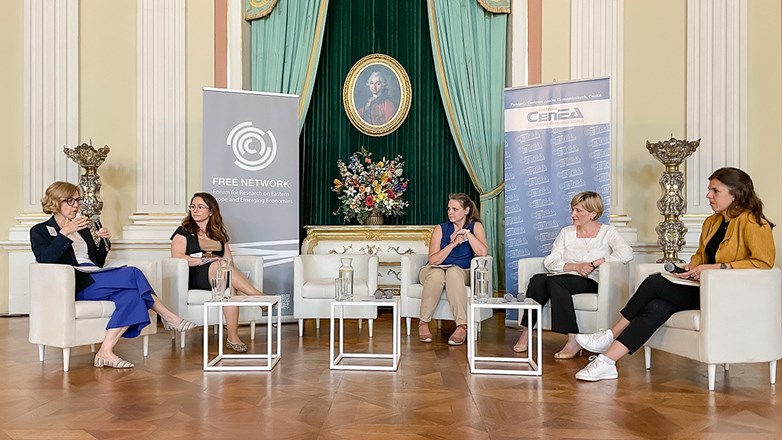Key takeaways from the FROGEE Conference "The playing field in academia: Why are women still underrepresented?"
Despite an increase in women’s representation since the beginning of the 20th century, women remain underrepresented in academia and other high-skilled professions. Academia has been prone to gender disparities both within and across fields as well as across academic ranks. In an endeavour to examine and address the underrepresentation of women in the academic profession, the Centre of Economic Analysis (CenEA), together with the Stockholm Institute of Transition Economics (SITE) and other partners of the Forum for Research on Gender Economics (FROGEE) at the FREE Network, organized the two-day conference “The playing field in academia: Why are women still underrepresented?”, in Warsaw June 21-22, 2023. This brief offers insights from the presentations and panel discussions held at the conference.
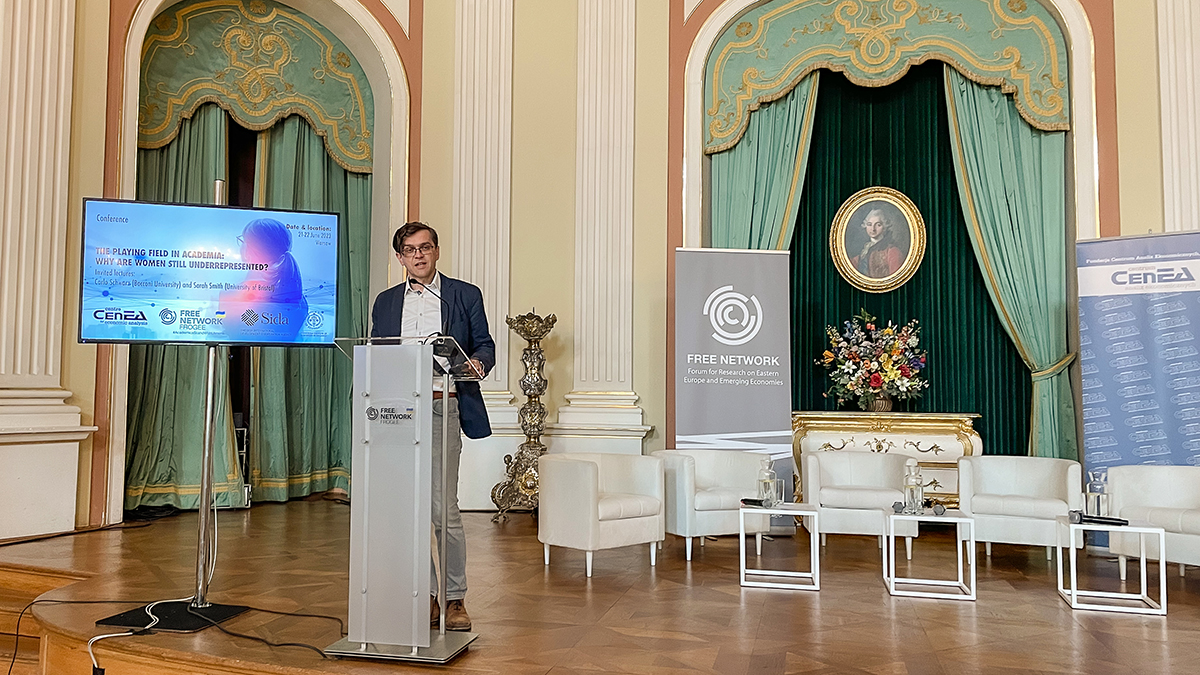
Photo of Michal Myck, Director of CenEA, during the conference on 22 June. Photo: Dominick Nilsson
To date, there are few, if any, high-skilled professions exhibiting gender balance, and academia is no exception. Consequently, this imbalance has been subject to increased multidisciplinary research attention, exploring its origins and potential remedies. However, attaining a comprehensive understanding of gender disparities remains a challenge. For instance, much remains to be learnt about their long-run dynamics, a subject addressed by Carlo Schwarz, in one of the conference’s keynote lectures.
A century of progress
Carlo Schwarz (in joint work with Alessandro Iaria and Fabian Waldinger, 2022) trace the evolution of gender gaps in academia across a variety of domains at the global level throughout the 20th Century. Facilitated by an unprecedentedly large database of nearly 500,000 academics, spanning 130 countries and supplemented by publication and citation data, the authors specifically examine gender imbalances in recruitment, publishing, citation patterns, and promotions.
They find that in 1900 women constituted roughly 1 percent of all hires in academia (226 women, with only 113 hired as full professors). By 1969 the share of female academics had risen to about 6.6 percent, and by the year 2000 it had grown to approximately 17 percent. These rates varied across disciplines, institutions, and countries. For instance, teaching-centric disciplines such as pedagogy and linguistics, exhibited higher representation relative to research-oriented ones.
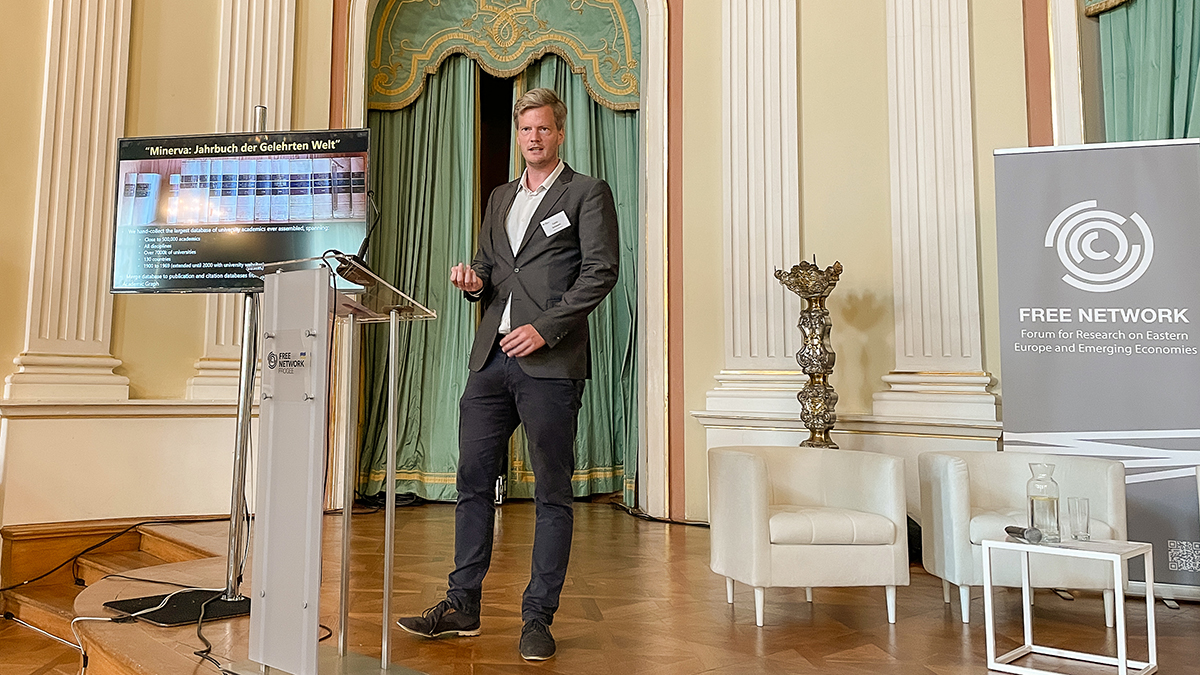
Photo of Carlo Schwarz, Professor at Bocconi University, during the conference on 22 June. Photo: Dominick Nilsson
The research subsequently reveals a hump-shaped evolution of the gender gap in academic output – starting small before peaking at 45 percentage points fewer publications by women in 1969, thereafter declining to 20 percentage points. These publication disparities were also found to share a U-shaped relationship with the share of women in academia, indicating the interconnectedness of gender gaps.
The authors also address gender gaps in citations, identified by the use of a novel machine learning approach, forecasting a paper’s citations had it been written by a man. The results indicate a progressive reduction in the citation gap during the 20th century, decreasing from 27 percentage points (pre-WW1) to 14 percentage points (interwar) and eventually to 8 percentage points (post-WW2) fewer citations of papers by female relative to male academics. These gender gaps in academic output reiterated current evidence from Mexico, presented at the conference by Diana Terrazas-Santamaria, showing that women are associated with lower citation rates. Terrazas-Santamaria attribute the low rates to gender differences in both the number of publications and duration of academic careers.
The work by Iaria, Schwarz and Waldinger (2022) further showcase the gender disparities in career advancement in academia, which similarly decreased over the years. At the point of the greatest gender disparity, women required an approximately 6 percentage points better publication record to have the same promotion probabilities as their male counterparts.
The leaky, dry pipeline
In the conference’s second keynote, Sarah Smith highlighted how academia, much like other professional occupations, exhibits a leaky pipeline. This is a phenomenon characterized by a declining representation of women as they ascend through the academic hierarchy. When examining specific fields, Smith’s results indicate that the gender disparities in economics much more closely align with those observed in STEM fields (science, technology, engineering, and mathematics) than other social science disciplines. Furthermore, the economics’ field illustrate a significant lack of diversity among its new entrants. This phenomenon, referred to as the dry pipeline, generates future cohort implications, as they result in less demographically representative cohorts from which future professors can be recruited (see Stewart et al., 2009).
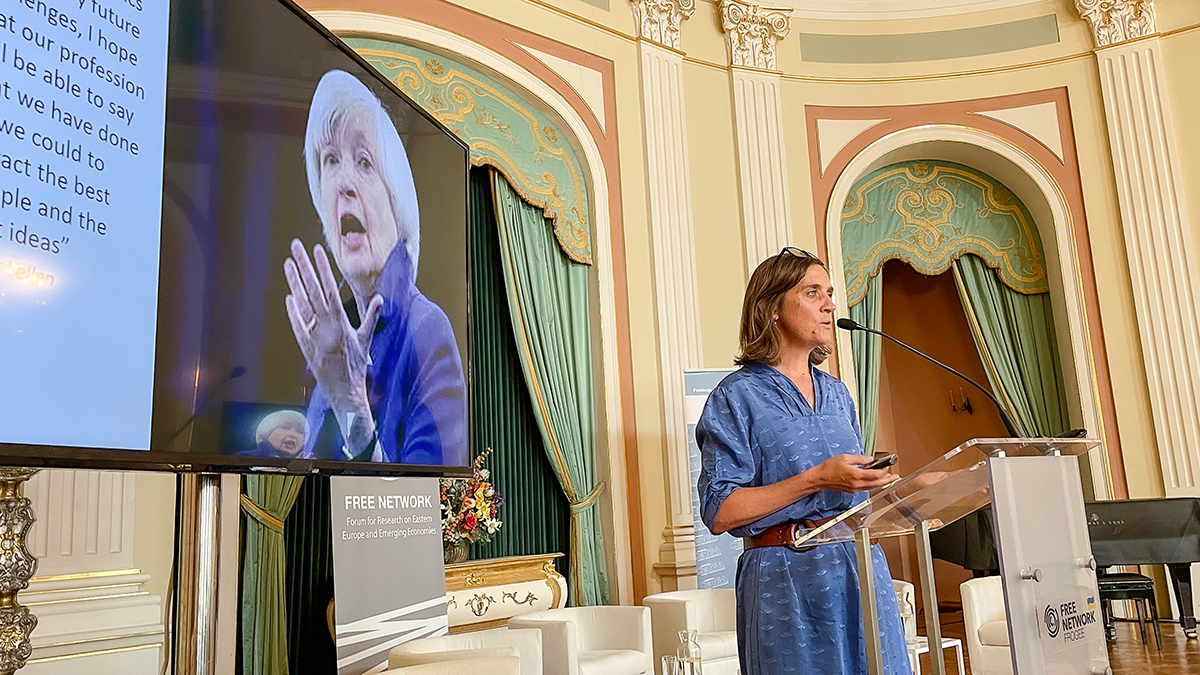
Photo of Sarah Smith, Professor at University of Bristol, during the conference on 22 June. Photo: Dominick Nilsson
The cross-disciplinary comparison of the dry pipeline addressed in the keynote, contest the mathematical rigor of economics as a barrier to entry, as mathematics itself demonstrated higher women representation at A-level and undergraduate levels. In a following discussion panel, which focused on ensuring a fair start in academia (comprised of Yaroslava Babych, Alessandra Casarico, Federica Braccioli and Marta Gmurek, and moderated by Maria Perrotta Berlin), the panellists acknowledged that deeply engrained social expectations, gender trained behaviours and a lack of awareness constitute some of the persistent hindrances to the (early) involvement of women in specific fields, and the academic profession in general.
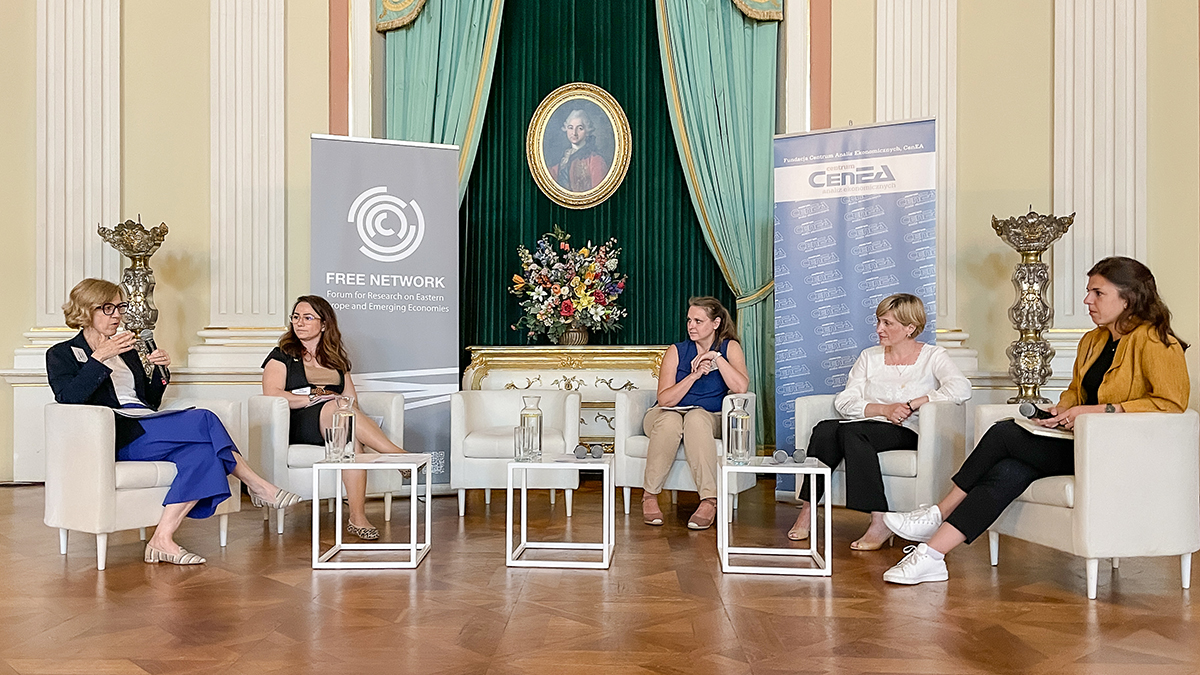
From left: Alessandra Casarico, Maria Perrotta Berlin, Marta Gmurek, Yaroslava Babych and Federica Braccioli, during the conference on 22 June. Photo: Dominick Nilsson
Additional factors influencing the gender balance in recruitment and promotion are gendered references, and the presence or absence of shared research interests between candidates and recruitment panels. These themes were extensively investigated in the work presented by Alessandra Casarico on the conference’s opening day. Specifically, results from collaborative work with Audinga Baltrunaite and Lucia Rizzica, highlight that grindstone words (e.g., “determined”, “hardworking”, etc.) are frequently used in recommendation letters to describe female candidates, while standout words (e.g., “excellent”, “strongest” etc.) typify male candidates’ references. Compared to their male counterparts, women are also shown to be more inclined to accentuate personality traits when serving as referees. This added to a broader literature demonstrating that female candidates’ recommendation letters frequently exhibit brevity, raise doubts, carry a weak tone, and emphasize candidates’ interpersonal skills and personality traits rather than their ability. Moreover, separate results from Casarico’s work (with Piera Bello and Debora Nozza) illustrate that research similarity between the recruiting committee and the candidate predict the likelihood of recruitment. The authors argue that the relationship is indicative of a bias against women if – as shown by the authors – women are less likely to be the candidates with the highest similarity.
In her presentation, Anne Sophie Lassen offered a different factor that may contribute to the attrition in the pipeline: the influence of parenthood on academic careers. Results from her work (with Ria Ivandić) indicate that while parenthood does not significantly influence graduation rates, it extends doctoral studies by an average of 7 months for women. Moreover, Lassen highlighted a declining trend of remaining in academia after becoming a parent, particularly pronounced among women.
More areas of imbalance
The remaining conference presentations and panel discussions explored additional domains of gender imbalances within academia. Iga Magda showcased evidence from her joint work with Jacek Bieliński, Marzena Feldy and Anna Knapińska of gender differences in remuneration during the early stages of an academic career, substantiating a gap within a year of graduation. These disparities endure throughout respondents’ careers and are contingent on the field of study – largest among engineering and technology graduates and lowest among those from the humanities and arts fields. Furthermore, it was observed that productivity plays a negligible role in the identified pay gaps, as its impact is similar for both genders.
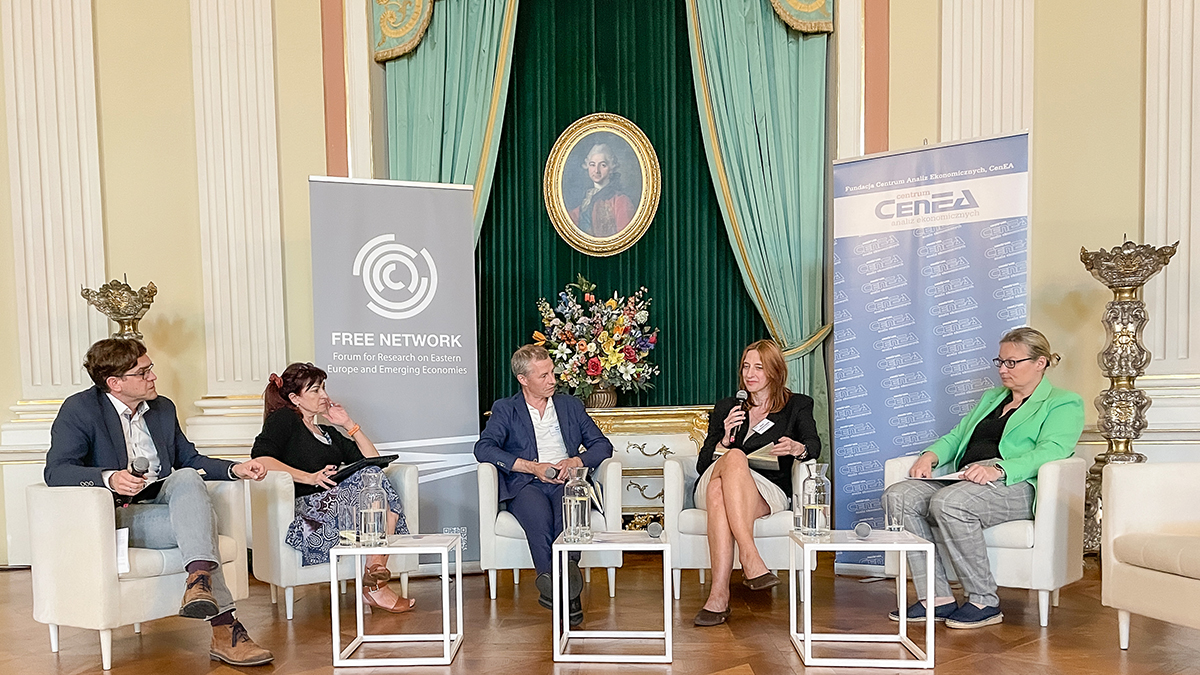
From left: Michal Myck, Eleni Chatzichristo, Jesper Roine, Marta Łazarowicz-Kowali and Joanna Wolszczak-Derla, during the conference on 22 June. Photo: Dominick Nilsson
The panel composed of Eleni Chatzichritou, Marta Łazarowicz-Kowalik, Jesper Roine and Joanna Wolszczak-Derlacz, and moderated by Michał Myck, deliberated on exposed disparities in the application for, and the success rates in attaining research funding in Poland and Europe – as seen in the National Science Centre (NCN) and the European Research Council research grants, respectively. The discussion highlighted how quantitative measures used in the allocation of research funding are riddled with subjective criteria that often benefit male academics. They also recognized how quests to allocate funds to the most successful candidate inadvertently penalize women with career breaks.
Another panel including Lev Lvovskiy, Carlo Schwarz, Sarah Smith, Marieke Bos and Joanna Tyrowicz, and moderated by Pamela Campa, lauded the growing objective data shedding light on gender inequalities in academia. The panellists discussed current challenges in identifying and quantifying aspects of gender disparities. For instance, currently used proxies do not allow to capture more subtle disparities, like microaggressions faced by female academics from students – emphasizing the need for more individual level survey data.
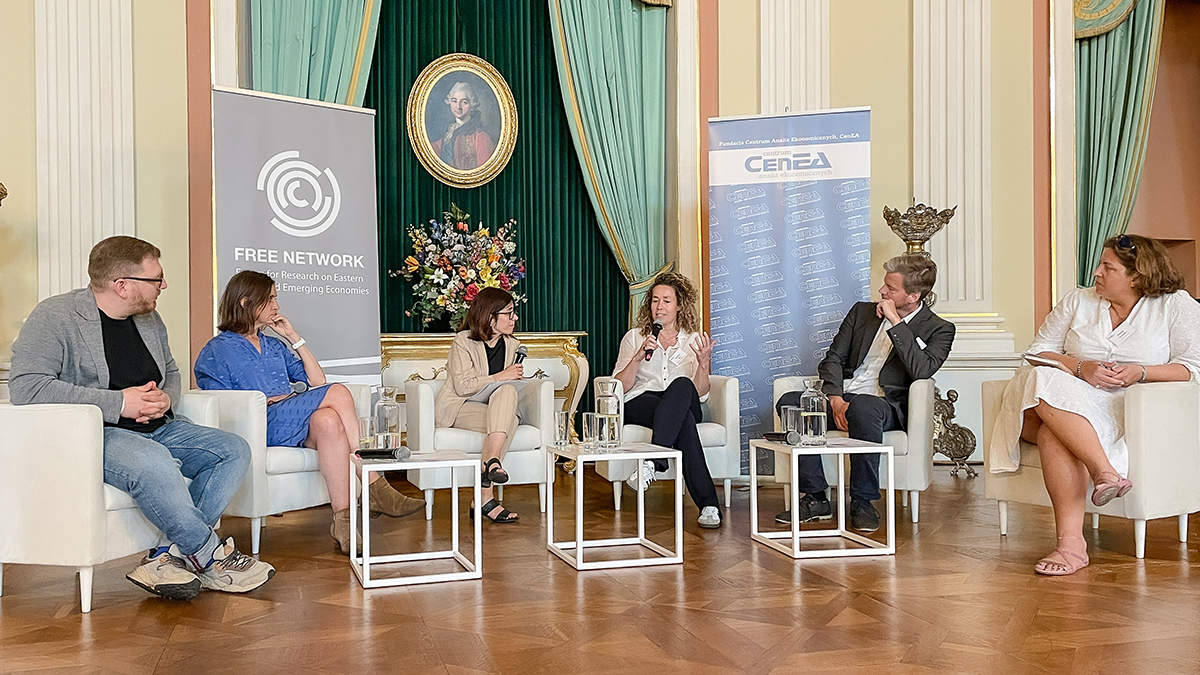
From left: Lev Lvovskiy, Sarah Smith, Pamela Campa, Marieke Bos, Carlo Schwarz and Joanna Tyrowicz, during the conference on 22 June. Photo: Dominick Nilsson
The panels were further enriched by personal anecdotes and filled with retrospective advice shared by both early career and established academics. To contextualize the above, a few cases from the FREE Network countries follow.
Evidence from within the FREE Network
Yaroslava Babych shared insights concerning women in higher education in Georgia and other countries of the South Caucasus. Preliminary findings of her study confirm the presence of gender inequality in academia, evident in disparities in access to higher education as well as gender segregation across both fields and countries. Notably, women comprise a majority of the graduates in bachelor’s and master’s of art programs, whereas higher research-level programs such as doctors of science, and top echelons of the academic hierarchy remain predominantly male. Moreover, female academic output is found to be lower than that of male counterparts.
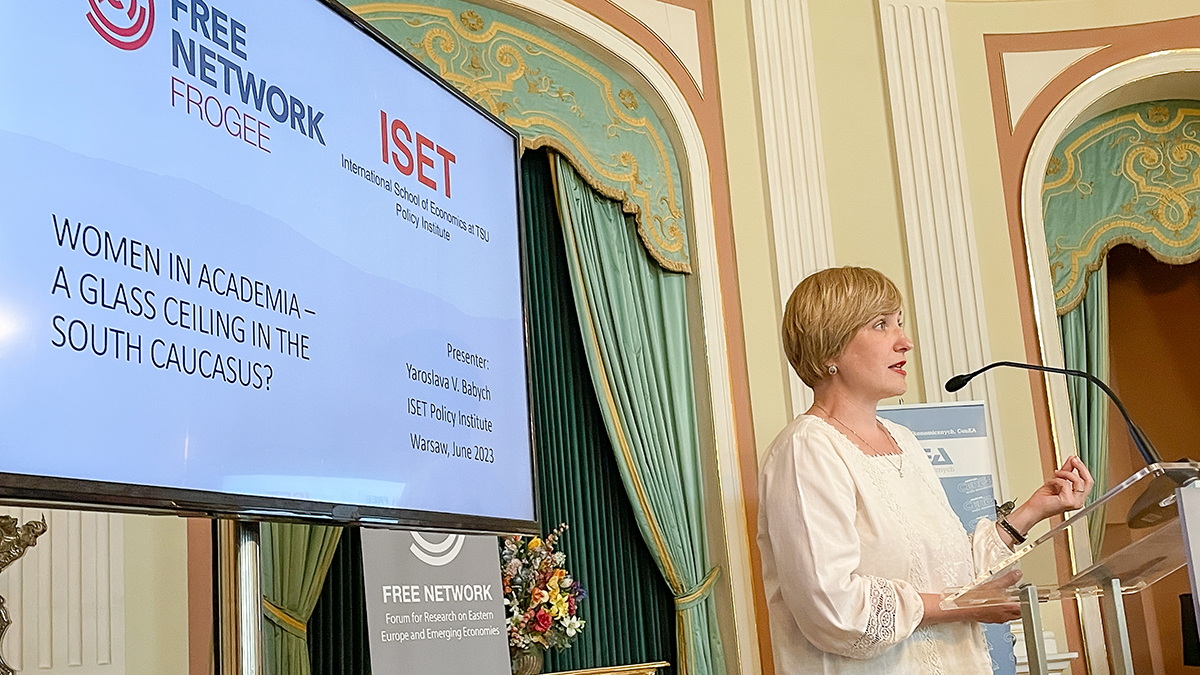
Photo of Yaroslava Babych, Assistant Professor at ISET-PI, during the conference on 22 June. Photo: Dominick Nilsson
Lev Lvovskiy discussed the case of Belarus, highlighting the influence of the Soviet legacy. A significant factor linked to this legacy is exploiting university enrolment to circumvent compulsory conscription of men, allowing male university admissions to serve a secondary purpose beyond acquiring knowledge. This increases the perceived opportunity cost of enrolling a woman. Lvovskiy further documented the academic trajectories of Belarusians, revealing a majority of women at college and doctoral levels, but being underrepresented among doctoral graduates. The results further indicate significant cross-disciplinary gender disparities, with humanities having close to 80 percent women representation and engineering and information and technology (IT) fields having less than 30 percent women representation.
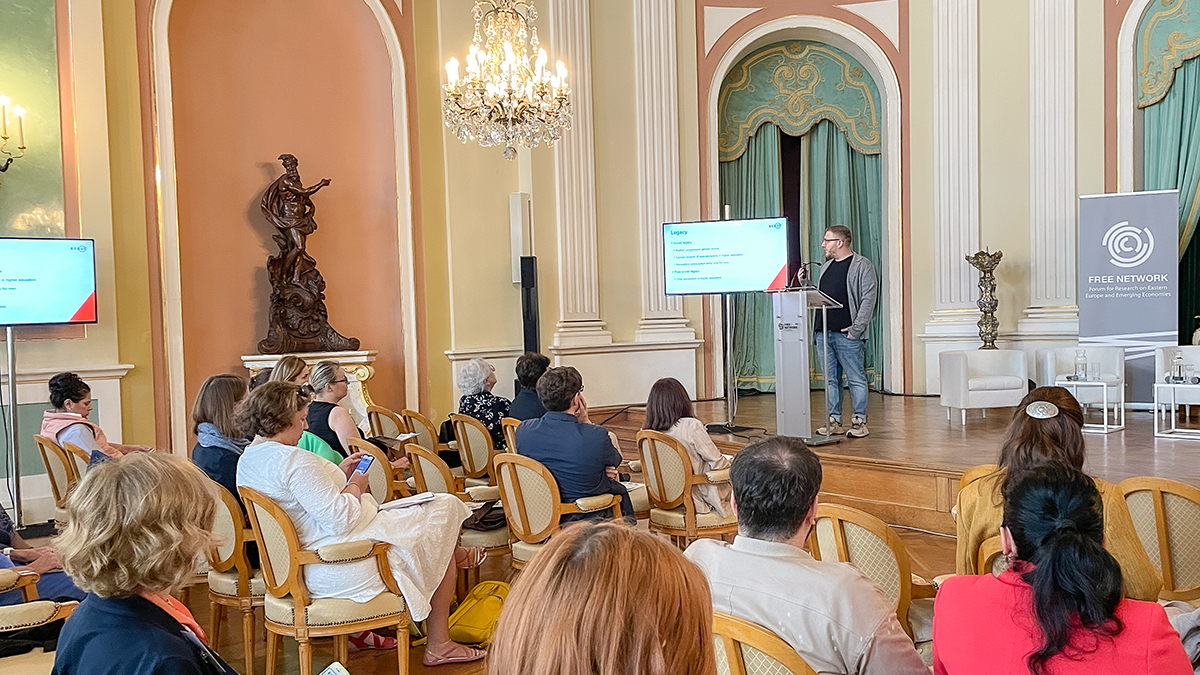
Photo of Lev Lvovskiy, Director of BEROC, during the conference on 22 June. Photo: Dominick Nilsson
Monika Oczkowska provided evidence of gender disparities in Poland. Findings from the country reveal an overrepresentation of women graduates from bachelor through doctoral levels, and relative parity at post-doctoral level, but lower proportions at habilitation, associate professor, and professor levels. These general results confirm the higher detail findings presented by Karolina Goraus-Tanska on the first day of the conference. Results from Goraus-Tanska’s work (with Jacek Lewkowicz and Krzysztof Szczygielski) suggest that the drop-off among female academics from habilitation levels is not attributed to higher output expectations for women, but rather stems from the impact of parenthood.
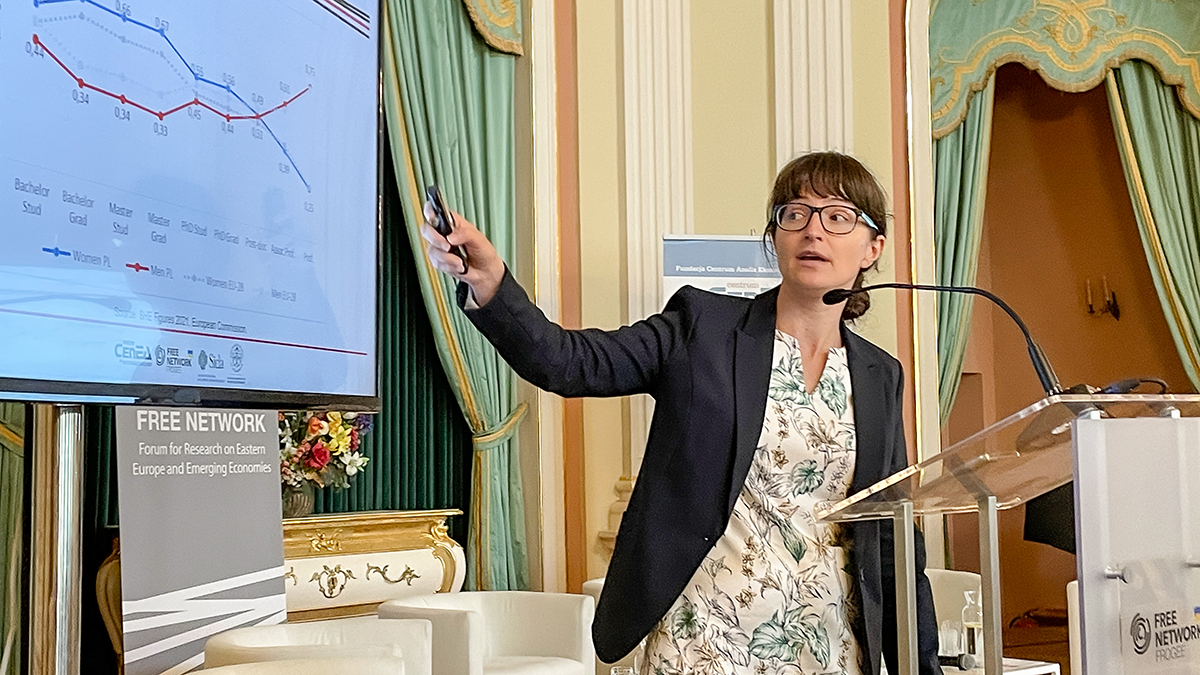
Photo of Monika Oczkowska, Senior Research Economist at CenEA, during the conference on 22 June. Photo: Dominick Nilsson
Oczkowska further demonstrated that female academics in Poland are characterized by fewer international collaborations and lower levels of international output. Polish female academics were also showcased to engage in more international mobility during their doctoral studies relative to men, with the converse holding true after obtaining a doctoral degree. A potential explanation for this mobility decline among female academics, could be the increased burden of familial responsibilities at the post-doctoral and higher levels. Moreover, fewer women were reported to have applied for NCN grants and were underrepresented among the beneficiaries of these calls. Lastly, female academics in Poland record significantly lower total project costs relative to their male counterparts.
‘Plugging’ the leak
In light of the aforementioned, what measures can be taken to address the gender imbalances in academia? As summarized by Sarah Smith, early initiatives have involved tracking women representation (e.g., in admissions, progression, hiring, etc.) within departments and/or institutions to identify where in the pipeline their progress is impeded. Attempted initiatives include formulation of seminar guidelines to overcome unfair experiences, as well as using gender-blind recruiting and objective hiring criteria to equalize hiring opportunities. Some other efforts, such as diverse recruitment panels have been unsuccessfully adopted, as they seem to embolden hostile male recruiters and load female panellists with unrewarded administration tasks. Conversely, mentoring has helped women build networks, publish more, and advance professionally. Awareness raising campaigns have reduced disparities in teaching evaluations and remain vital in addressing the dry pipeline and both transparent workload allocation and rewarding of administrative tasks have been shown to reduce promotion gaps in academia. In addition to the above, initiatives such as fostering gender-neutral networking opportunities, collaborations and a more diverse faculty were also deliberated during the conference.
Concluding remarks
The conference advanced dialogue on societal and structural constraints to gender equality in academia and provided a platform to exchange ideas on how the shared objective of a more inclusive and equitable academic environment can be achieved. While the challenges remain abundant, and the costs associated not always negligible, it remains crucial to assess achievements, such as those resulting from mentoring and awareness intervention initiatives and recognize that further opportunities to enhance equity within the profession exist.
Author
Ellam Kulati
Researcher | CenEA
Ellam is a Ph.D. researcher at CenEA and a Ph.D. candidate at the University of Warsaw. He holds a MA in Economics from the University of Warsaw, and a Bachelor’s in Economics from the University of Nairobi. His research interests include the economics of ageing, household, labour and behavioural economics.
Additional material
Disclaimer: Opinions expressed in events, policy briefs, working papers and other publications are those of the authors and/or speakers; they do not necessarily reflect those of SITE, the FREE Network and its research institutes.
Cover photo by Dominick Nilsson
